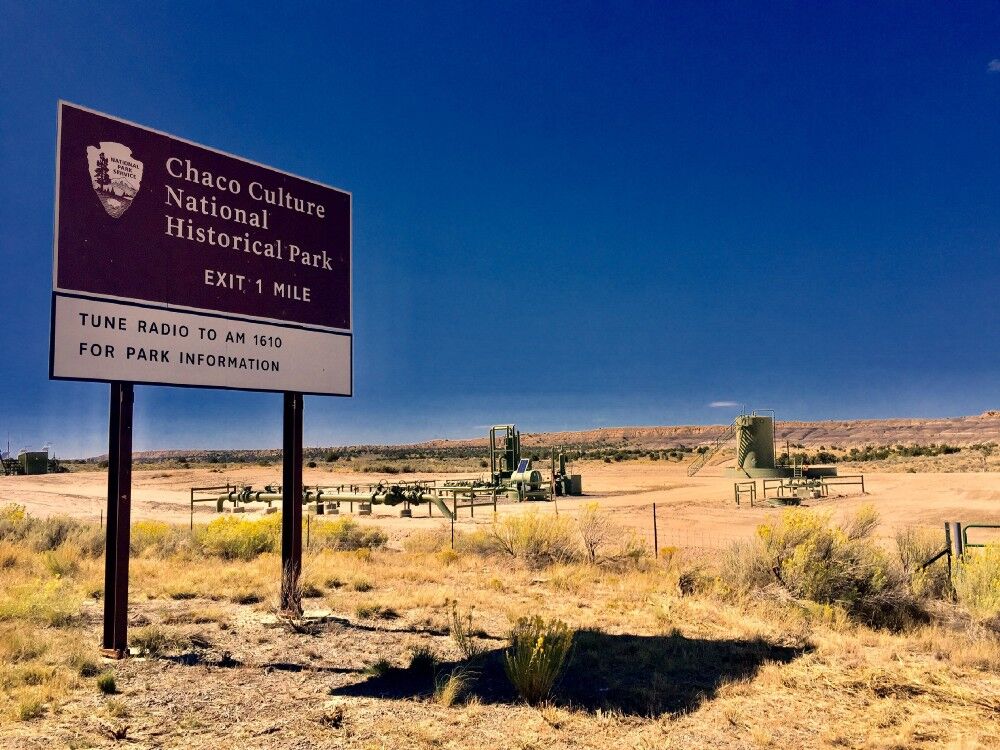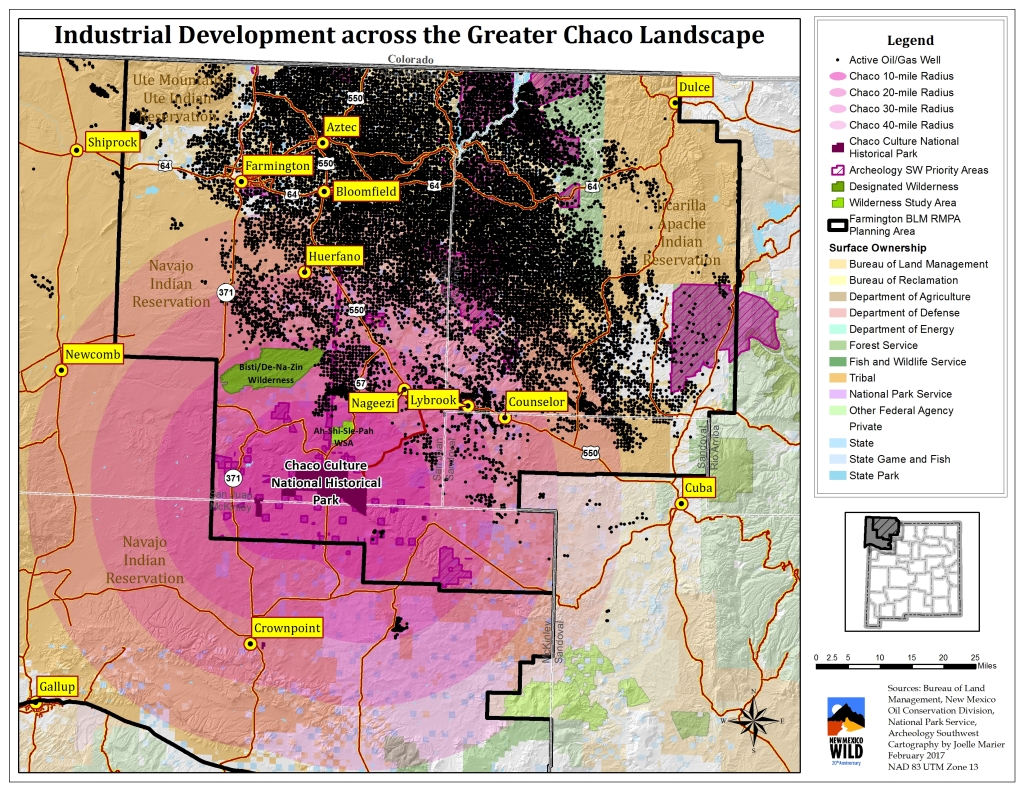LAND AND WATER CONSERVATION FUND BENEFICIARY
The Land and Water Conservation Fund (LWCF) is America’s most important program to conserve irreplaceable lands and improve outdoor recreation opportunities throughout the nation. The program works in partnership with federal, state and local efforts to protect land in our national parks, national wildlife refuges, national forests, national trails, and other public lands; and to provide the tools that communities need to meet their diverse conservation and recreation needs. Many New Mexico public lands have benefited from the Land and Water Conservation Fund and we hope many more of our important natural treasures will continue to benefit from a fully-funded Land and Water Conservation Fund. Chaco Culture National Historic Park is a great example of one of our parks that has received LWCF funds.
Chaco Culture National Historical Park is like no other place on Earth. This reality is evident in the intricate architecture of “Great Houses” such as Pueblo Bonito, which were designed to hold hundreds of rooms including a plaza within the house to be used as a gathering place. The petroglyphs and pictographs that decorate the canyon provide a glimpse of the past and help frame our understanding of the Chacoan way of life. The rich cultural, historical, and archaeological resources abundant in the national park help explain why Chaco Culture is one of only eleven cultural UNESCO World Heritage Sites in the United States.

However, the park and the artifacts found in its direct vicinity have faced constant threats for centuries. After the settlements in the Greater Chaco Region were abandoned around the middle of the 13th century C.E., many sites fell victim to vandalism as visitors began to take artifacts from the interior of many of the buildings. The looting and vandalism persisted almost entirely unchecked until the site was designated as a National Monument in 1907. The Greater Chaco Region continues to face constant threats of a different kind, however, this time in the form of the oil and gas industry, which has been encroaching ever closer to the park’s border for decades. These extractive activities threaten to dig up and dismantle cultural resources that can never be replaced or restored.

Fortunately, New Mexico’s entire Congressional delegation is committed to permanently protecting Chaco and the surrounding lands. Senators Tom Udall and Martin Heinrich, Assistant Speaker Ben Ray Lujan, and Congresswomen Deb Haaland and Xochitl Torres Small, are all cosponsors of the Chaco Cultural Heritage Area Protection Act of 2019. The legislation would remove all public lands within ten miles of the national park from consideration for future oil and gas drilling operations, essentially defending the cultural resources at the site from the extractive industries for the rest of time. The legislation passed the full U.S. House of Representatives on October 30, 2019 and now awaits further action in the U.S. Senate.

New Mexico Wild Northern Conservation Director Garrett VeneKlasen recently accompanied Senator Heinrich and tribal leaders on an overflight above the Greater Chaco Landscape to view the site from a different perspective.

“The thing that stuck with me most on that trip was how Sen. Heinrich and Santa Ana’s Governor, Timothy Menchego, were continually narrating the interconnection of habitat, landscapes, watersheds, wildlife and traditional Puebloan movements from Chaco back to the middle Rio Grande Valley,” said VeneKlasen. “And in the middle of all of it sits Chaco, which was such a vibrant and remarkable place for such a long time – until pronged drought forced its residents to disburse into other landscapes.”

The stark reality that so much is at risk beyond the borders of the national park itself has instilled a profound sense of urgency in those who see the value of this remarkable landscape. It is why New Mexico Wild is calling on Congress to permanently fund the Land and Water Conservation Fund, which has contributed millions of dollars to places like Chaco throughout the years since its creation in 1964. It is also why New Mexico Wild continues to support the efforts of our Congressional delegation to defend Chaco from the threat of the oil and gas industry. In April, Luján and Haaland joined several of their colleagues on the House Committee on Natural Resources for a tour of Chaco to observe the impacts of oil and gas development in the region. Following the tour, the officials hosted a field hearing on the issue in front of a packed house of local stakeholders and special guests Gov. Michelle Lujan Grisham and state Land Commissioner Stephanie Garcia Richard at the state Capitol.

Then in May, U.S. Interior Secretary David Bernhardt visited Chaco at the request of Sen. Heinrich to learn more about threats to the cultural resources found at the site. He announced immediately after his visit that the Bureau of Land Management would not approve oil and gas lease sales within 10 miles of the national historical park for the next calendar year, buying more time to push the Chaco protection bill through the legislative process. Heinrich also won a commitment from the secretary that the administration would lift its opposition to the legislation.

Shortly after Bernhardt’s visit, Luján attached an amendment to an Interior Department spending bill that codifies the one-year moratorium on all mineral developments in the 10-mile buffer zone surrounding Chaco. The amended spending bill was approved by the House. Meanwhile, Udall moved to hold the administration accountable regarding protections for the Greater Chaco Landscape. At a Senate Appropriations Committee hearing in May, Udall pressed Secretary Bernhardt about his agency’s tendency to approve mineral development projects near Chaco despite community objections, saying, “We see this in the Department’s efforts to expand oil and gas development in the region surrounding Chaco Culture National Historical Park in New Mexico. The Department keeps pressing forward even though Native American Tribes and Congress have objected to the effect that this development will have on such a sacred landscape.” While there is still much to be done to protect the Greater Chaco Landscape forever, New Mexico Wild is encouraged by these courageous efforts to defend the region. “Our compromised landscapes and watersheds are less functional and dependable now then they even were back then, so maybe this is a lesson for all of us, that we have to protect and restore what we have so that it will sustain us far into the future,” said VeneKlasen.
For more information on the Land and Water Conservation Fund and to Sign the Petition to support full funding, go to: bit.ly/fundlwcfnm
Photos: David Muench, Tisha Broska, Garrett VeneKlasen, The House Committee on Natural Resources.

